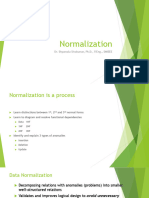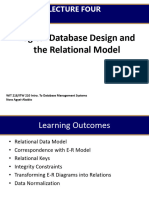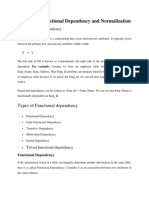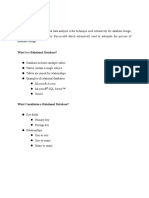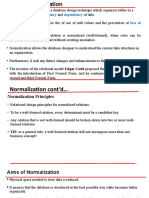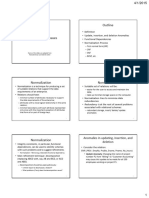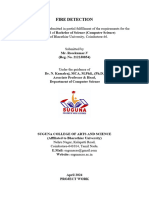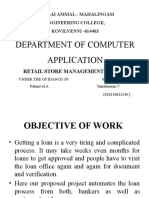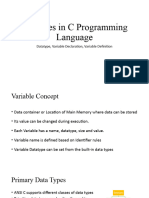0% found this document useful (0 votes)
80 views24 pagesRelational Model Normalization
The document discusses database normalization and its goals of eliminating data anomalies. It defines three normal forms - first normal form requires no repeating groups, second normal form removes partial dependencies by splitting tables, and third normal form removes transitive dependencies. An example table is normalized through this process by splitting it into multiple tables to remove anomalies and adhere to the various normal forms.
Uploaded by
Nida TocyoCopyright
© © All Rights Reserved
We take content rights seriously. If you suspect this is your content, claim it here.
Available Formats
Download as PDF, TXT or read online on Scribd
0% found this document useful (0 votes)
80 views24 pagesRelational Model Normalization
The document discusses database normalization and its goals of eliminating data anomalies. It defines three normal forms - first normal form requires no repeating groups, second normal form removes partial dependencies by splitting tables, and third normal form removes transitive dependencies. An example table is normalized through this process by splitting it into multiple tables to remove anomalies and adhere to the various normal forms.
Uploaded by
Nida TocyoCopyright
© © All Rights Reserved
We take content rights seriously. If you suspect this is your content, claim it here.
Available Formats
Download as PDF, TXT or read online on Scribd
/ 24



















